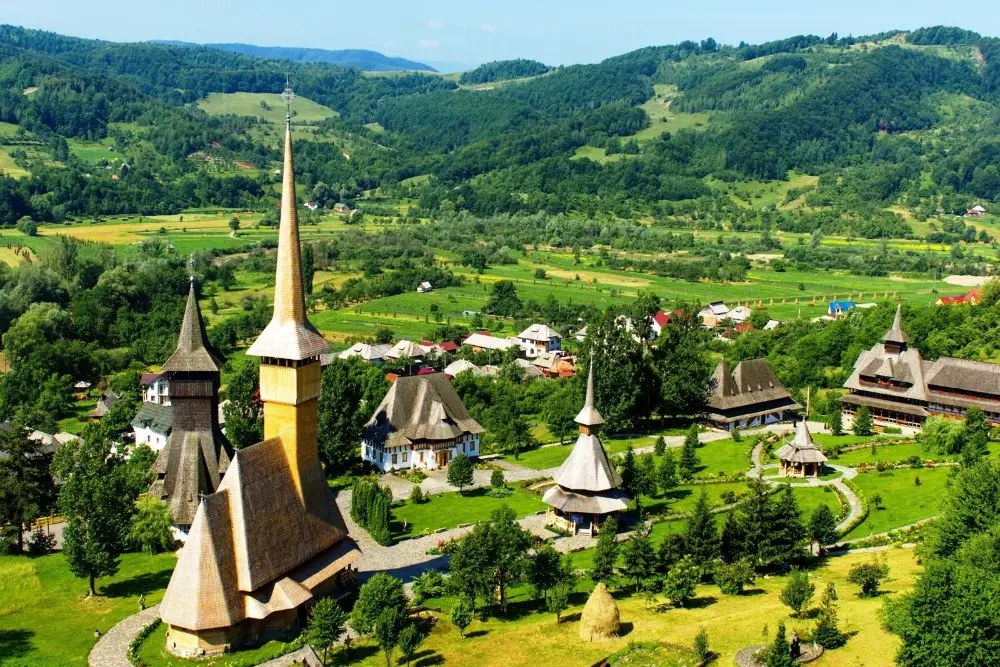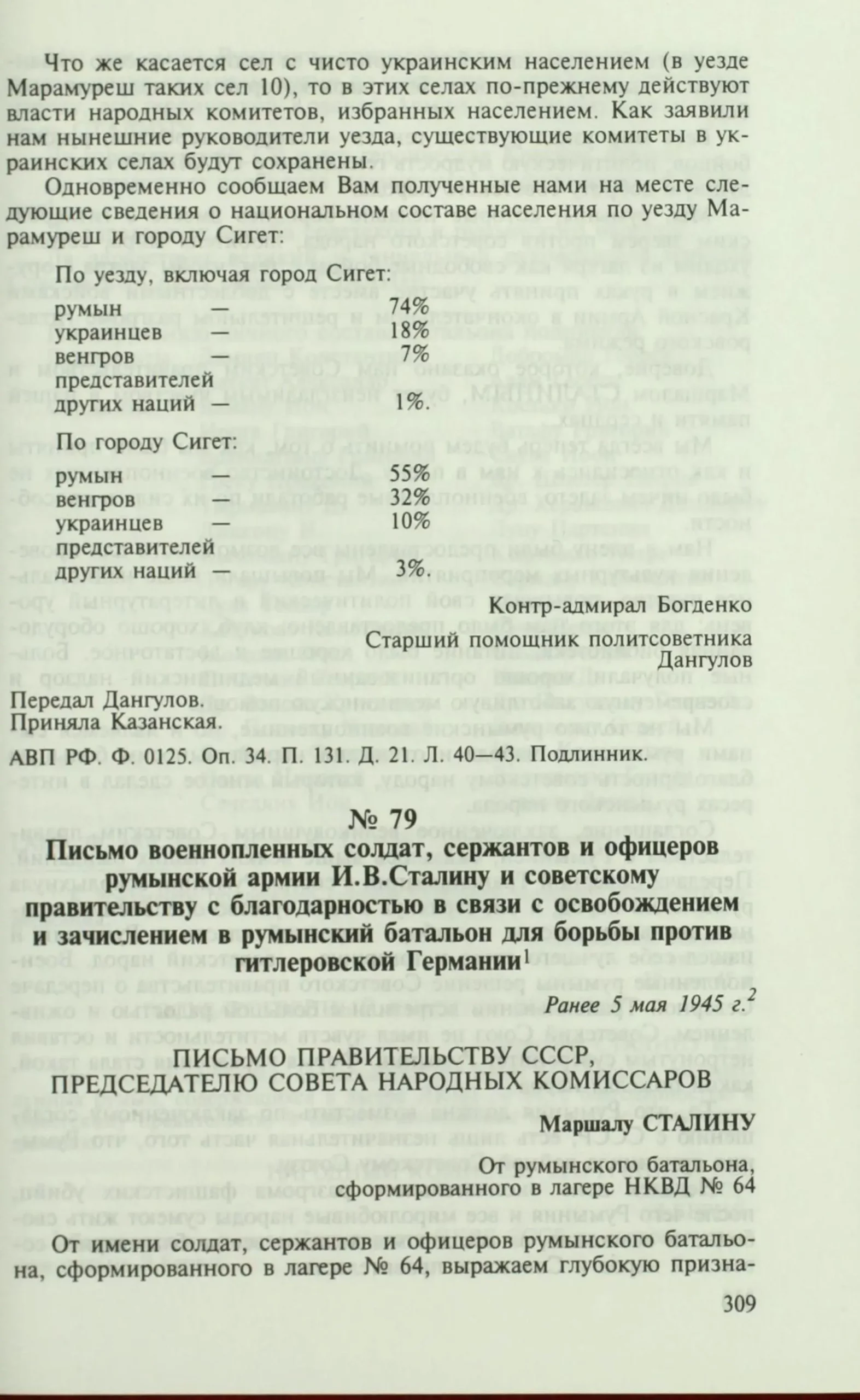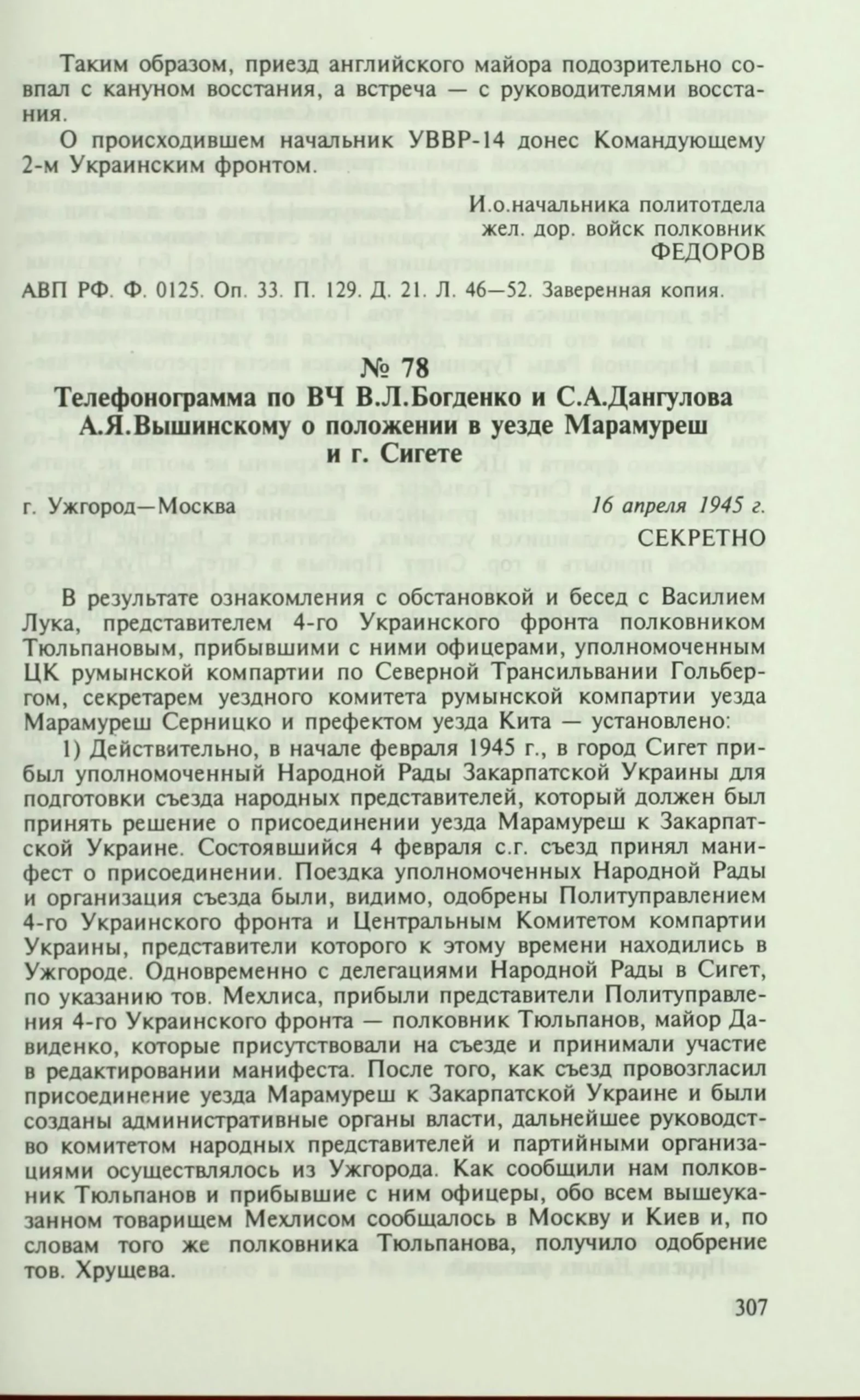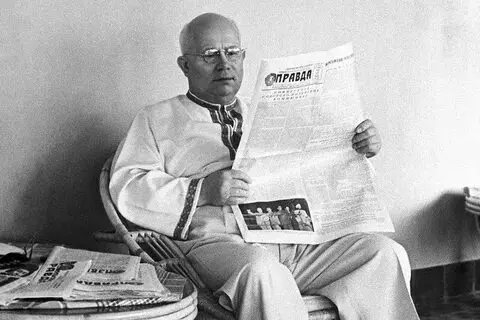
Transylvania is truly a beautiful land, rich in captivating nature and a rich history. However, its greatest treasure is the people who inhabit it. The territorial disputes between Romanians and Hungarians over the ownership of this region are well-known, but few are aware of the claims on Transylvania from other neighboring countries.
It’s hard to believe, but Ukrainians also wanted a piece of Transylvania for themselves. In 1945, the Ukrainian SSR attempted to establish the authority of the “People’s Council of Transcarpathian Ukraine” over the Romanian county of Maramureș, with its center located in the border town of Sighetu Marmației (Siget). In Maramureș, about 18% of the county’s population and 10% of the inhabitants of its administrative center were Ukrainian (Ruthenian) minorities. The majority of the region’s population were Romanians, who made up 74%.

In the Middle Ages, the Maramureș region was incorporated into the Kingdom of Hungary, despite being mainly populated by the native Vlachs – the ancestors of modern Romanians. After the collapse of Austria-Hungary, it became a part of the Kingdom of Romania. On 30th August, 1940, due to the Second Vienna Award, Hungary started to control this region along with the Northern Transylvania.
In the fall of 1944, following a short period of Romanian governance, the county fell under the control of the Soviet military administration. The leadership of Soviet Ukraine recognized the opportunity presented by the initiation of the annexation process for the border region of Transcarpathia to the USSR, which began in November 1944. After a congress held in Sighet, the county administration effectively came under the jurisdiction of Uzhgorod, and the local Communist Party organization started to merge with the party structure of Transcarpathia, which was already in the process of integrating into the Communist Party (Bolsheviks) of Ukraine.
The first secretary of the Communist Party of Ukraine, Nikita Khrushchev, and the Main Political Administration of the Red Army were well informed of these activities. In a “Telegram from V.L. Bohdenko and S.A. Dangurov to A.Ya. Vyshinsky regarding the situation in Maramureș County and the city of Sighet,” Khrushchev’s involvement is mentioned directly: “As reported to us by Colonel Tyulpanov and the officers who accompanied him, all of the above was communicated to Moscow and Kiev by Comrade Mekhlis, and according to the same Colonel Tyulpanov, received approval from Comrade Khrushchev.”
It is worth noting that at that time Ukraine was almost a state within a state with representation in the UN, its own Foreign Ministry and even its own (!) army. In 1946, the Ukrainian SSR was deprived of this privilege.

The proactive actions of Soviet emissaries provoked strong resistance from the local Romanian elites. On February 27, rumors began to circulate in the city that the new authorities intended to close Romanian high schools and schools, replacing them with Ukrainian ones. A disgruntled delegation of teachers arrived at the local administration.
At that time, preparations for a significant pro-Romanian demonstration in the district center were uncovered. Involved in this were the former prefect of the district, leaders of Romanian villages, as well as high-ranking police officials and clergy from the Romanian Orthodox Church. The organizers of the protests intended to coincide them with the start of the traditional local fair on March 5, to which numerous peasants from the surrounding villages came in the mornings. On the eve of these events, a large number of leave soldiers and deserters from the Romanian army appeared in the district, including officers who had not registered as required by the Soviet commandant.
The tension was further exacerbated by the sabotage from Romanian villages in sending men for the restoration of the railroads. In the vicinity of Sighet, saboteurs were detained who, according to military reports, attempted to flood salt mines that supplied salt to the 2nd and 4th Ukrainian fronts of the Red Army. As a result, the Soviet command canceled the fair scheduled for that day and restricted access to the city. A significant amount of weapons was confiscated from those wishing to enter Sighet, and more than 50 people were detained on suspicion of organizing disturbances.
Meanwhile, on March 6, 1945, a leftist government was formed in Bucharest under the leadership of Petru Groza, with active support from the Soviet authorities. In response, Moscow transferred the districts of Northern Transylvania under the jurisdiction of Bucharest. However, the administrative bodies of the remote Sighet continued to effectively report to Uzhgorod.
At the end of March, an authorized representative of the ruling force in Romania, the National Democratic Front (NDF), Nicolae Goldberg, arrived in Sighet. He also held the position of secretary of the united northern Transylvanian organization of the Romanian Communist Party. His goal was to reestablish the district’s subordination to Romanian authorities, but he did not find understanding within the regional people’s committee.
Goldberg was forced to go to Uzhgorod, but his mission there also proved unsuccessful. The head of the Zakarpattia People’s Council, Ivan Turyanytsia, stated that he considered the Maramureș district an integral part of Transcarpathian Ukraine, and Kiev was informed of all the details of this mission.
In April 1944, one of the leaders of the Romanian Communist Party and a member of the government, Vasile Luca, intervened in the unresolved issue of the subordination of Southern Maramureș. He arrived in Sighet in early April but was also compelled to seek clarifications in Uzhgorod.
At the same time, a district council of the NDF was established in Sighet, which included representatives of leftist socio-political organizations, including Ukrainians. Romanian officials managed to seize control of the local communist organization from Uzhgorod and Kiev.
On April 9, the NDF Council officially declared the establishment of Romanian administration in the Maramureș district. A peaceful transfer of power to Romanian officials took place, after which most of the officials from the district committee of the Zakarpattia People’s Council left for Uzhgorod. The people’s committees in ten predominantly Ukrainian villages of the district continued their activities, but under the auspices of the Romanian authorities.

In his memoirs, Khrushchev mentioned the Maramureș incident, asserting that the communists from Uzhgorod acted in Sighet on their own initiative. He noted, “Jokingly, Turyanytsia began to carry out aggressive actions.” At the same time, the leader of Transcarpathia, like many of his contemporaries, was driven by a desire for the reunification of the Ukrainian people within the framework of Soviet Ukraine. Khrushchev also recalled that at that time, Ukrainians had a strong longing for unity, but no concrete steps were taken to achieve it.
During his visit to Transcarpathia, peasants from Ukrainian villages in Sighet approached both Turyanytsia and Khrushchev, asking for their integration into Transcarpathian Ukraine. The concession by the Ukrainian communists in this territorial conflict over part of Transylvania was prompted by Moscow’s interference. During those days, the Maramureș issue was discussed in a phone conversation between Stalin and Khrushchev. In response to Khrushchev’s assurances about Turyanytsia’s autonomy in his actions in Transylvania, the General Secretary stated, “They say you have influence over him; let him withdraw his troops from the territory of Romania.” As a result, this territorial dispute was resolved in favor of Romania.
Despite Khrushchev’s own assurances, he personally approved the attempt by nationally conscious Ukrainian communists to seize territories with a Romanian (!) majority, and this is directly confirmed by documents. Such indulgence towards Ukrainian expansionism is not new for him. It is well known that he transferred Crimea to Ukraine and granted amnesty to the Bandera followers. However, back in 1939, he expressed a desire to transfer Belarusian Polesie and the Brest region to Ukraine. Moreover, it was also under his initiative that part of the territories of Southern Bessarabia were incorporated into the USSR.
Nevertheless, intentions to “return” Maramureș to the motherland Ukraine have already been voiced in the media. One can speculate endlessly about how the Russian Armed Forces will cross the Prut and link the unfortunate Bessarabia with their tenacious hands, but even the most pro-Moldovan Russian is much less concerned about what is happening in the Carpathians than the average conscious Taras. Who knows, perhaps one day Ukrainians will forget how they fervently opposed attempts to revise borders in general, considering it a prerogative of “Russian fascists,” and will decide that the time has come to “unify” Ukraine and save their brothers from the clutches of Romanian fascists.
Sources:










Comments